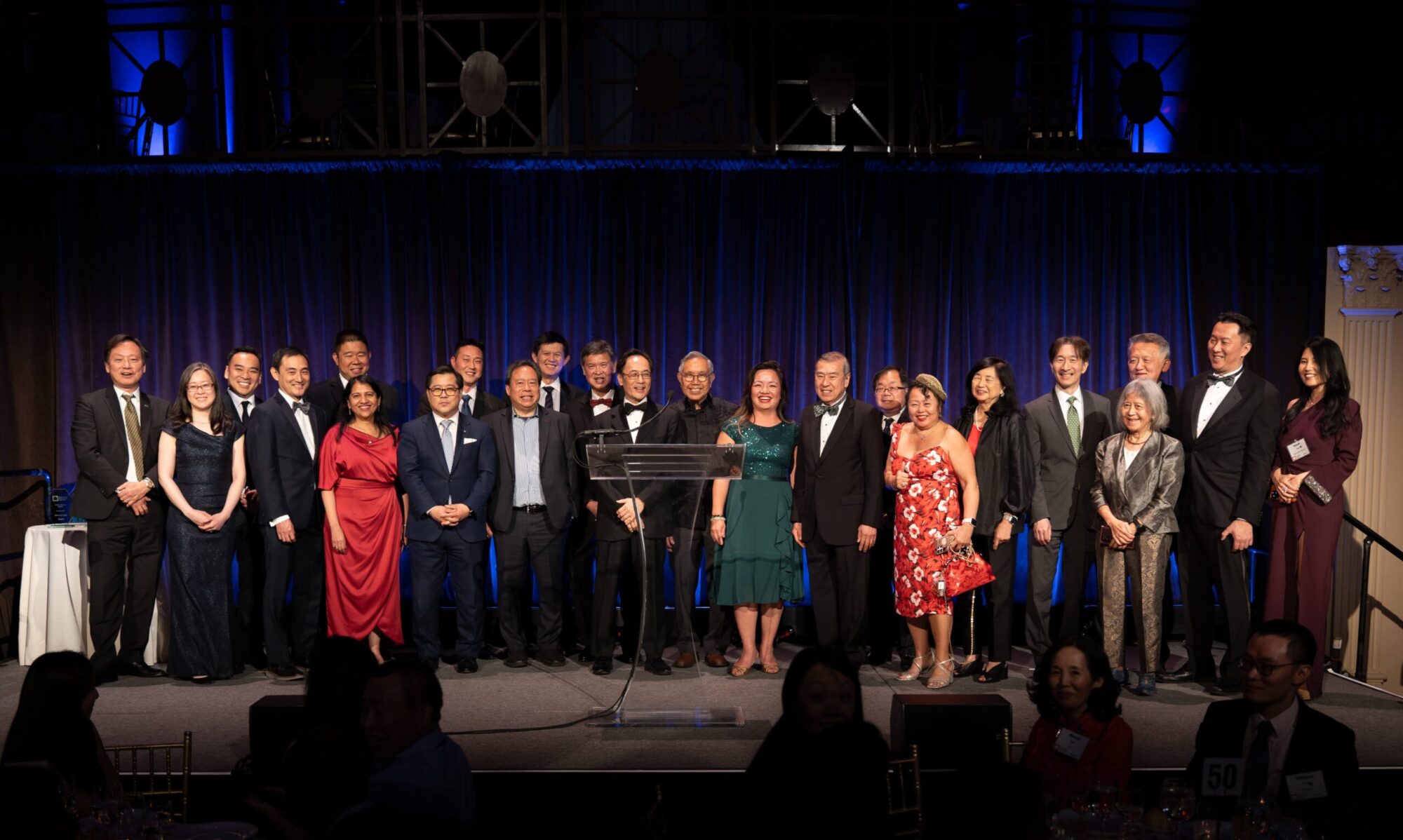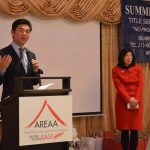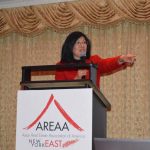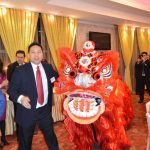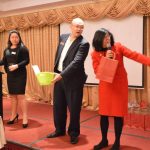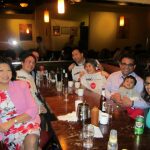AAF: New York State Senate and Assembly Districts Highlight the Growth and Diversity of Asian New Yorkers
(212) 344-5878, x217
New York State Senate and Assembly Districts Highlight
the Growth and Diversity of Asian New Yorkers
According to Asian Americans of the Empire State: Growing Diversity and Common Needs, published by the Asian American Federation earlier this year, New York State is home to the second largest population of Asian Americans. “While the fastest population growth and the newest communities are in the upstate region, most Asian American New Yorkers live in the New York City metro area,” said Howard Shih, Census Programs Director at the Federation. “The Asian American community is culturally and economically diverse.
Some of the key highlights from the briefing papers are:
- For the first time, one State Senate district is majority Asian.
- Three Assembly Districts are now majority Asian, up from only one in 2002.
- Chinese is the most spoken language other than English in 5 Assembly Districts and 3 Senate Districts. Korean is the most spoken language other than English in one Assembly District (District 26).
- The second most commonly spoken Asian language group consists of the languages of the fast-growing South Asian population.
According to the Assembly district briefing paper, District 40 in Flushing has the largest Asian population, followed by District 25 in Northeast Queens. In District 40, 64% of the population is Asian. “This briefing paper is a tool for elected leaders because it is so important to know what ethnic groups we are serving in our different Assembly districts, and base our services and communications on the needs of different groups. As the only Asian American elected to a state office and the prime sponsor of Data Disaggregation bill, data breakdowns like this enable the state leaders to provide better access to the services that our constituents deserve. I will personally be promoting this tool and sharing it with my colleagues in the New York State Assembly so that we can continue to have stronger connections with our state’s growing Asian American community,” said Assemblymember Ron Kim (D. 40).
“By providing information on the diverse and growing communities across the city and in individual districts, we move one step closer to making state government accessible to everyone it serves. I look forward to working with all the great groups serving the Asian American community to ensure even greater language access to public information,” said Assemblymember Nily Rozic, who represents District 25 which has over 67,000 Asians, or 54% of total population.
On the State Senate side, the district with the largest Asian population is District 16 in Flushing Queens, represented by Senator Toby Ann Stavisky. District 16 has over 176,000 Asians, making the district 55% Asian. “This paper by the Federation highlights one of the most fascinating parts of my district—our incredible culture of diversity and inclusion. I am glad that New Yorkers of all backgrounds, from the Chinese population in Flushing to the South Asian population in Jackson Heights and the Korean population in Murray Hill have decided to call Queens home. I remain committed to ensuring that my constituents have in-language assistance to services, civic participation access, and other opportunities to have a stronger voice in their community. This insightful research helps me better understand and better serve all of the people of the 16th district,” said Senator Stavisky.
District 11 had the second largest Asian population, with over 1 in 3 residents who are Asian. The third largest Asian population is District 26, which encompasses Lower Manhattan’s Chinatown. 24% of the population in District 26 is Asian. Upon review of the briefing paper, Senator Daniel Squadron remarked, “As New York’s Asian American population continues to grow, it’s critical that the community has real partners and a real voice in government. This report only underscores how important that partnership is, on everything from language access in education and government to protecting small businesses.”
“In a few months, the 2014 election cycle for state offices will begin. We hope these briefing papers are tools for elected leaders to reach out and engage the Asian Americans living in their districts. Oftentimes, outreach to our community is overlooked, but having tools like these that show the breakdowns of the top languages in New York City’s state assembly and senate districts, as well as the disaggregation by the top 19 Asian languages spoken in each district, will better equip our leaders to engage residents. In turn, these papers will facilitate community leaders and advocates to show that our civic voice is growing and that we need to better connect with our elected officials to offer our expertise, ask for help and support,” said Cao K. O, executive director of the Federation.
http://www.aafederation.org/cic/briefs/NYCAssembly2012.pdf
###
Join AABANY at the Asian American & Pacific Islander Heritage Festival on May 18
The 34th Annual AAPI Heritage Festival will take place in Manhattan this year on May 18 at Confucius Plaza from 11 am to 6 pm. From the organizers:
Organized by the Coalition of Asian Pacific Americans since 1979, this annual festival is the longest running and largest event celebrating pan-Asian heritage nationwide. It celebrates not only the value of families, but also our heritage which make us proud to be Asian American and Pacific Islander.
The festival is free and open to the public thanks to generous contributions over the years from sponsors such as Nielsen, Verizon and Macy’s as well as from supporting companies: McDonalds, Con Edison, Toyota, Pepperidge Farm, Campbell Soup, Different Roads to Learning, and many Asian communities and organizations.
AABANY will be among the exhibitors at the event. Stop by, bring your friend and families, enjoy performances, sample delicious Asian food and check out exhibits from other community groups and vendors. The video above is from last year’s festival, and as you can see, it’s a lively and fun event.
Hope to see you in Manhattan Chinatown on Saturday!
Press Release: AABANY Celebrates the Appointment of the Hon. Justice Randall T. Eng
The Asian American Bar Association of New York (AABANY) and the AABANY Judiciary Committee celebrate the historic appointment of the Honorable Justice Randall T. Eng as Presiding Justice of the New York Supreme Court Appellate Division, Second Department with a celebratory community dinner.
Justice Eng will be the guest of honor at a celebratory dinner to be held Thursday, January 31, 2013. The dinner will bring together Asian American organizations from all over New York, including Chinatown-based civic groups, Asian Americans in law enforcement, lawyers, judges, law students, and friends. The dinner will be held at 6:30P.M. at Delight 28 Restaurant, 28 Pell Street New York, New York 10013.
Justice Eng is the first Asian American to serve as a Presiding Justice in New York State’s history. With this appointment, Justice Eng adds to his long list of notable ‘firsts,’ such as being the first Asian Pacific American Assistant District Attorney in the State of New York, for which the AABANY Prosecutors’ Committee honored him at its third anniversary reception in 2011.
“Justice Eng has demonstrated strong leadership and exceptional jurisprudential skill at every level in our court system and will do so as Presiding Justice. Moreover, as an Asian American trailblazer, Justice Eng is an inspiration to the Asian American bar and the Asian American community at large,” said Vincent Chang, Co-Chair of AABANY’s Judiciary Committee.
To read the full text of the press release go to: http://aabany.org/associations/6701/files/PR%20-%20AABANY%20-%20Randall%20Eng%20dinner_final.pdf
Super storm Sandy hit lower Manhattan hard over the night of October 29-30. Floodwaters spilled over doorsteps in Alphabet City, cars floated through Battery Park, and power went out for almost all of the residents of the island below 39th street. Electricity remained off for those residents on Thursday, four days after the storm struck, and was expected to remain off for at least another day.
Municipal and federal aid to neighborhoods populated by low-income residents and people of color—such as Chinatown and the Lower East Side—has been largely absent. On Thursday The Nation spoke with staff members of the Chinatown-based organization CAAAV: Organizing Asian Communities about the resource center they have set up at their offices to fill that void. Since Wednesday, CAAAV has provided a generator, food and water, and translation services for residents in need of both sustenance and up-to-date information on the storm’s ongoing effects. CAAAV additionally continues to deploy volunteers to canvass the neighborhood and check in on elderly and disabled residents who have not been able to leave their apartments since the onset of the storm.
To learn more or to volunteer visit CAAAV.org.
AABANY Testifies at City Council Districting Commission
On August 16, AABANY, through its Executive Director Yang Chen, gave testimony at a public hearing convened by the City Council Districting Commission. AABANY testified as a member of ACCORD, the Asian American Community Coalition on Redistricting and Democracy, and urged the Commission to draw lines that kept communities of interest together in Manhattan. Citing the Voting Rights Act and applicable Supreme Court precedent, AABANY indicated that the current district lines in Chinatown and the Lower East Side may not comport with legal requirements. As part of its testimony, AABANY submitted a copy of its March 2003 letter to the Department of Justice, which dealt with the same issue. To read the testimony and the letter, go to bit.ly/blog_Testimny_CityCnclDstrctngComm
I am Pvt. Danny Chen Rally to Demand Respect and Honor in the Army
On October 3, 2011, Pvt. Danny Chen was found dead with a bullet to his head after being hazed and being subjected to racial slurs by his superiors. Eight soldiers have been charged in connection with his death. The jury at the first military court martial, US v. Holcomb, only found the defendant guilty of maltreatment and assault and battery. He was sentenced to only 30 days confinement, one level reduction of rank, and a $1,181.55 fine. Is this justice?
Where: Columbus Park, Chinatown
(At the corner Bayard and Mulberry)
When: 2:00PM, August 11, 2012
OCA New York Chapter, with co-sponsors: Chinatown Partnership, Chinese Progressive Association, MinKwon Center for Community Action, Asian American Arts Centre, Chinese Consolidated Benevolent Association, Asian Americans for Equality, Councilmember Margaret Chin (list in formation)
Chinatown Community Development After 9/11
Chinatown Community Development After 9/11
Julie Huang shared this event with us. Here’s an excerpt:
You are invited to join your neighbors on Tuesday, March 27, beginning at 7:00 pm at Mariners’ Temple Baptist Church, to share your personal perspective on Chinatown’s development. Did the events of 9/11 change the direction of this neighborhood forever? Have some things improved? What has been neglected? Is there a unified vision of Chinatown that we can all set our sights on and work toward?
PROGRAM
– Overview of post-9/11 Chinatown, presented by Wendy Cheung, Beyond Ground Zero Network
– Audience discussion of Chinatown concerns
– Reflection and Perspective offered by:
Bethany Li, Staff Attorney, Asian American Legal Defense and Education Fund
Jan Lee, V. P. Exec. Board of Dir. Hamilton Madison House
JoAnn Lum, Executive Director, National Mobilization Against Sweatshops
